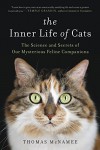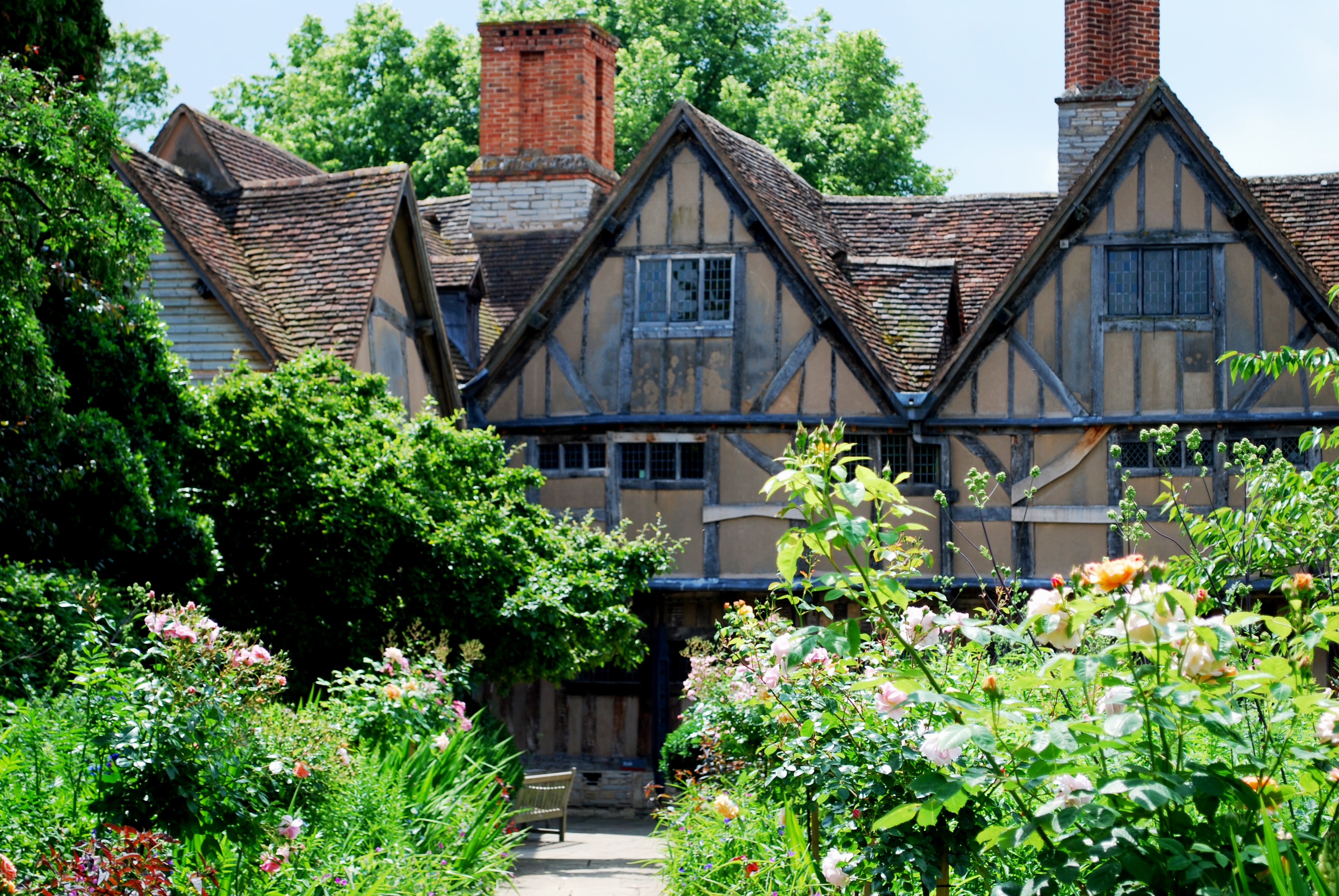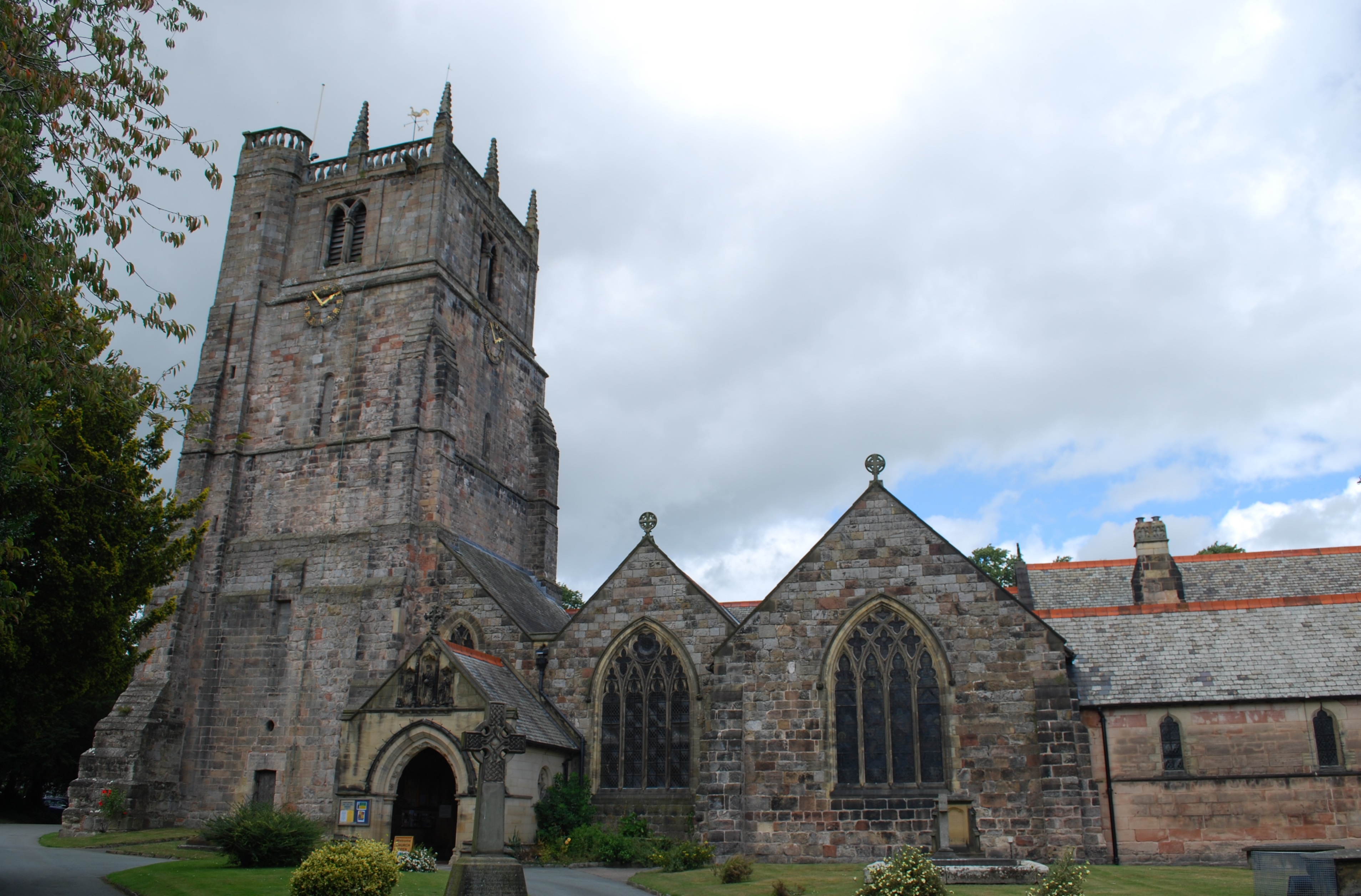Currently Reading






Find me elsewhere:
24 Festive Tasks: Door 7 - Mawlid, Task 2 (Book Rescue & Book-Related Places of Pilgrimage) ... also, My Personal Literary Canon, Part 1
If I donate books, I usually put them into one of the little libraries ("open bookcases") around town, some of which are quite close to where I live:


As for book-related locations, I try to include visits to the homes of any writers from the area whenever I'm traveling -- but there are a few places that I have visited / keep going back to not only out of general literary interest (or interest in that particular author and his / her works), but more in a genuine spirit of pilgrimage. I've decided to use this post and Task 3 for Veterans' / Armistice Day (the question about "veteran" readership) to finally make good on my intention to follow up on Moonlight's "personal canon" post, with this one being the (very photo-heavy) pictorial part and the other post supplying the corresponding text -- for these and also a few other authors. Consequently, I hereby give you ...
 1. The big WS: Stratford-upon-Avon, Globe Theatre (London), Kronborg Castle / Helsingør, Glamis and Cawdor Castles
1. The big WS: Stratford-upon-Avon, Globe Theatre (London), Kronborg Castle / Helsingør, Glamis and Cawdor Castles
Stratford-upon-Avon:


Shakespeare's birthplace in Henley Street and the Shakespeare coat of arms (left: portrait painting in a café opposite the birthplace)

Nash House (the home of Shakespeare's granddaughter Elizabeth and her first husband Thomas Nash) and, next door / in what is now the garden of Nash House, the location of New Place, Shakespeare's final (alas, destroyed) Stratford home

New Place memorial plate (right-click on the image to see a larger version) and, opposite Nash House and New Place, Guild Chapel and King's New School, the grammar school which Shakespeare is believed to have attended

Left: Hall's Croft (the home of Shakespeare's eldest daughter Susanna and her husband Dr. John Hall); right: Anne Hathaway's cottage home in Shottery village near Stratford

Holy Trinity Church, where Shakespeare was baptized, married, and lies buried

Facsimiles of the entries for Shakespeare's baptism ("Gulielmus filius Johannes Shakspere," April 26, 1564) and death ("'Wilh. Shakspere, gent", April 25, 1616) in the Trinity Church parish register
Shakespeare's gravestone and epitaph (written by himself)

Royal Shakespeare Theatre and view from the RSC Theatre tower, over the roofs of RSC and Swan theatres; in the background, the spire of Holy Trinity Church

Swans near the old footbridge crossing the river Avon near the RSC theatre, and Swan Theatre at dusk
The Globe, London:







Glamis:

Cawdor:

Kronborg Castle, Helsingør [= "Elsinore"]:








2. Jane Austen: Chawton, Bath, Lyme Regis and Winchester
Chawton:


Jane Austen's final home, where she wrote all of her novels


The dining room with Jane's writing table tucked away in a corner next to the window


Replica of the blue dress and bonnet in which Jane was drawn by her sister Cassandra (see image to the right)



Bath:

Left: the Austen family's first home in Sydney Place (recently converted into furnished short-stay apartments); right: near Jane Austen Centre

Jane Austen Centre: Cassandra Austen's portrait of her sister, and Jane depicted writing near a window (in the foreground, her writing paraphernalia)



The Assembly Rooms: focal point of Regency Bath society

Assembly Rooms: historic fashion exhibit (Regency dress and accessories)


The Circus and the Royal Crescent -- in Austen's time, part of the parade ground of Bath's genteel society
Lyme Regis:



The dreaded steps ...

The Cobb ... which of course not only plays a pivotal role in Jane Austen's Persuasion but also in John Fowles's The French Lieutenant's Woman
Winchester:

Winchester Cathedral, where Jane Austen is buried

Austen's tomb and memorial plate
3. The Brontës: Haworth and the Yorkshire Moors


Haworth Parsonage: The Brontës' home, where they would write in the living room after their daily duties were done

Haworth: near the parsonage, and St. Michael and All Angels Church, where all of the Brontës except for Anne are buried

The Brontë memorial plates in Haworth church

The North Yorkshire moors and the ruins of Whitby Abbey -- which yearly also engenders pilgrimages of a somewhat different nature, as it was one of the chief inspirations for Bram Stoker's Dracula (whose final churchyard scene is set in Whitby, too)
4. Sherlock Holmes: 221B Baker Street and Dartmoor




221B: hallway and (somewhat cramped) sitting room

Holmes's chemical paraphernalia

Holmes's desk ... and The Hound

Dartmoor: the moors and Princetown prison
... though actually, Baskerville Hall was reportedly inspired by this building in ... Norfolk!
5. Agatha Christie and Dorothy L. Sayers: Torquay, Cholsey and London
The big one -- Christie's home at Greenway House in Devon -- is still on my must-see agenda; ditto the corner of the Fens where Dorothy L. Sayers grew up. Meanwhile, I did manage to visit:
Torquay:


Agatha Christie's birthplace, which inspired several of her novels. E.g., the large hotels at the very end of the promenade feature (under different names) in Peril at End House and The Body in the Library, and another hotel on a nearby tidal island is mirrored in the location of Evil Under the Sun

Left: Torbay Pavilion, where Agatha Christie met her first husband; right: the Yacht Club, where Christie's father was a prominent member





Don't ask me what an Agatha Christie Gallery is doing in a Natural History Museum (in the town where Christie was born, at that) ... but either way, here we are! For fans of the David Suchet / Hercule Poirot series: Almost the complete interior set of Poirot's apartment at Whitehaven Mansions was given to the museum after the series was over and done with for good. I guess it's time for another visit ...
Cholsey (Oxfordshire):
The Home Countries are not only a favorite filming location for Agatha Christie adaptations and other stories set in the first half of the 20th century, but they were actually Christie's final domicile as well.


Christie's grave, in St. Mary's churchyard

Left: "Marymead" nursing home ... Christie, Christie everywhere! Right: Outside of Cholsey
London:

24 Great James Street, Dorothy L. Sayers's best-known London address


Left: Mecklenburgh Square (Bloomsbury), the location of Sayers's first apartment in London; right: the approximate location of 110A Picadilly (Lord Peter Wimsey's London address, across the street from Green Park)
6. Ian Rankin and Robert Louis Stevenson: Edinburgh
Though, of course I very much love Edinburgh for itself, too. But I'd read Stevenson's and Rankin's books before I ever visited for the first time, and since Edinburgh is almost a character in and of itself in both of their books, it was actually quite a thrill to walk those streets after all and not only recognize place names but also recognize their distinct character, such as described by these two authors.


View(s) from Calton Hill: left, Old Town, Castle and Princes Street; right: Arthur's Seat and Salisbury Craigs, with the Scottish Parliament and Holyrood Palace in the foreground



St. Giles Church and the Royal Mile at Festival time (a time that Ian Rankin's John Rebus hates)

On and off the Royal Mile: Edinburgh City Chambers and the Heart of Midlothian -- both key features of Rankin's novels in particular, not only those featuring John Rebus (the Heart of Midlothian also because of the football / soccer club named for it)



The closes -- Old Town's warren of narrow alleys, many leading underground (Old Town actually consists of several layers of houses built right on top of each other over the course of its history); the most famous one being Mary King's Close, which was opened for guided tours in 2003 and leads to an area under the Royal Exchange, well-preserved enough to give an impression what city and tenement life in 18th century Edinburgh may have looked like. The closes, including Mary King's Close, make repeated appearances in Ian Rankin's novels and are one of his key symbols for Edinburgh's character as a city.

Deacon Brodie's Tavern on Royal Mile -- Deacon Brodie's story of a respected citizen (a locksmith) who turns burglar by night reportedly inspired Robert Louis Stevenson's Dr. Jekyll and Mr. Hyde -- and unsurprisingly, it, too, makes repeated appearances in Ian Rankin's writing

The "chasm" of the Cowgate, from George IV Bridge -- in the background the building serving for the longest time as Edinburgh's morgue

Princes Street in the throes of streetcar / tram construction (left: the monument to Walter Scott), and Edinburgh Castle seen from Princes Street Gardens

"At home": Left, Marchmont Street (John Rebus's and formerly also Ian Rankin's place of abode); right, the entrance of Robert Louis Stevenson's erstwhile home at No. 17 Heriot Row in Edinburgh's New Town (still in private ownership, now combining family residence, B&B and a hospitality / dining location)
And of course ... Hogwarts is not exactly in Edinburgh, but this post just wouldn't be complete without a bow to the place where Harry Potter and his world were created!
7. Brother Cadfael: Shrewsbury, Shropshire, and the Welsh Borderland


Shrewsbury: Abbey of St. Peter and St. Paul, and abbey foregate

Shrewsbury: the castle (left) and the battlefield of the 1403 battle between the Plantagenets (Henry IV (Bolingbroke) and Prince Harry, King Henry V-to-be) and the rebels led by Henry "Hotspur" Percy -- 2 1/2 centuries after the setting of the Cadfael series, but novelized by Ellis Peters under her real name Edith Pargeter as well (A Bloody Field by Shrewsbury) ... in addition, of course, to the play by William Shakespeare

"I am Hugh Beringar of Maesbury, (Under-)Sheriff of Shropshire ..."

Left: the tiny church of Maesbury; right: St. Eata's church at Atcham, another village close to Shrewsbury repeatedly mentioned in the Cadfael novels (typically as a way station on trips out of town, following the River Severn going east)

Oswestry: Castle Hill and St. Oswald's church

The Welsh mountains at / near the ruins of Valle Crucis Abbey (dissolved in 1537) -- and yes, Gwytherin is still on the agenda as well
8. John Steinbeck: Cannery Row (Monterey, CA)
Steinbeck was one of my earliest literary obsessions ... maybe because we never discussed his books in school but I discovered them for myself, through my fascination with all things California and, um, well, the East of Eden movie starring James Dean. So guess what was a must-see location to me on my very first trip to San Francisco!







9. Thomas Mann: Buddenbrookhaus, Lübeck






I've literally grown up with Thomas Mann's novels; Buddenbrooks in particular was a major "thing" in my family -- still, it took until well into the new millennium until I finally made it to the place that inspired the novel.





Lübeck's historic merchant houses and storage buildings -- the city landscape immortalized in Buddenbrooks
10. Elizabeth von Arnim: Rügen Island
... or actually, Elizabeth von Arnim and my grandpa, who (some 50+ years after the fact) published a short story about a ride to Spyker Castle on Rügen Island, which, though it is written in the third person, his family believes to be largely autobiographical. After my grandparents' marriage they and their kids became one of thousands of families spending their summer vacations on Rügen.


(My grandfather a few years after the ride from his story would have taken place, and with my mom (on his knees) and her elder sister and brother on a Rügen beach)
So, Rügen had been on my "radar" long before the Wall came down and it finally became possible again for West Germans to travel there (easily, that is, without visa applications, fear of surveillance by a dictatorial regime, and ten times more bureaucratic hassle than a simple vacation should require). Then I read Elizabeth von Arnim's Elizabeth's Adventures on Rügen ... and I knew I now seriously had to go there. And since Spyker had, in the interim, been transformed into a hotel, why not make that my base of exploration? I went in November, though -- which compared to the masses of people now flooding the island once more in summer made for a rather different mood; one that, honestly, I much preferred to the summertime crowds.






Spyker Castle: main building (= hotel), former stables (presumably the place where the mare from my grandpa's story was headed), and Lake Spycker at dusk







Binz, Rügen Island's largest and most important seaside resort

Sellin, Binz's slightly smaller and almost equally as important southerly neighbor

Rügen's famous white chalk cliffs -- the formation known as Königsstuhl ("royal chair", or simply "throne") in Jasmund National Park -- a UNESCO World Heritage Site ...





... and at Rügen's most northerly point, Cape Arcona

The Cape Arcona lighthouses (modern to the left, historic to the right) ... and a little Viking, reminding visitors that Rügen once used to be a Viking settlement
Jagdschloss Granitz was one of Elizabeth von Arnim's favorite spots ... and oh, look -- they're actually quoting her! (Along with some 5 or 10 other famous writers who visited the place and likewise mentioned it in their memoirs.)



Jagdschloss Granitz: and if you thought you were exhausted by the time you'd reached the top of the hill where it is located, think again when climbing those stairs up to the observatory tower ... (also, suffering from vertigo makes trying to climb them an absolute no-go: they're not only steep and winding but also extremely narrow)

Putbus castle and park

Left: Uniting Rügen and Bonn: Ernst Moritz Arndt, who was born in this building on Rügen Island and later taught at Bonn University, where he became one of the leaders of the 1840s' democracy movement.
Right: near Arndt's birthplace -- colorful cottage overload!







 18
18  17
17 